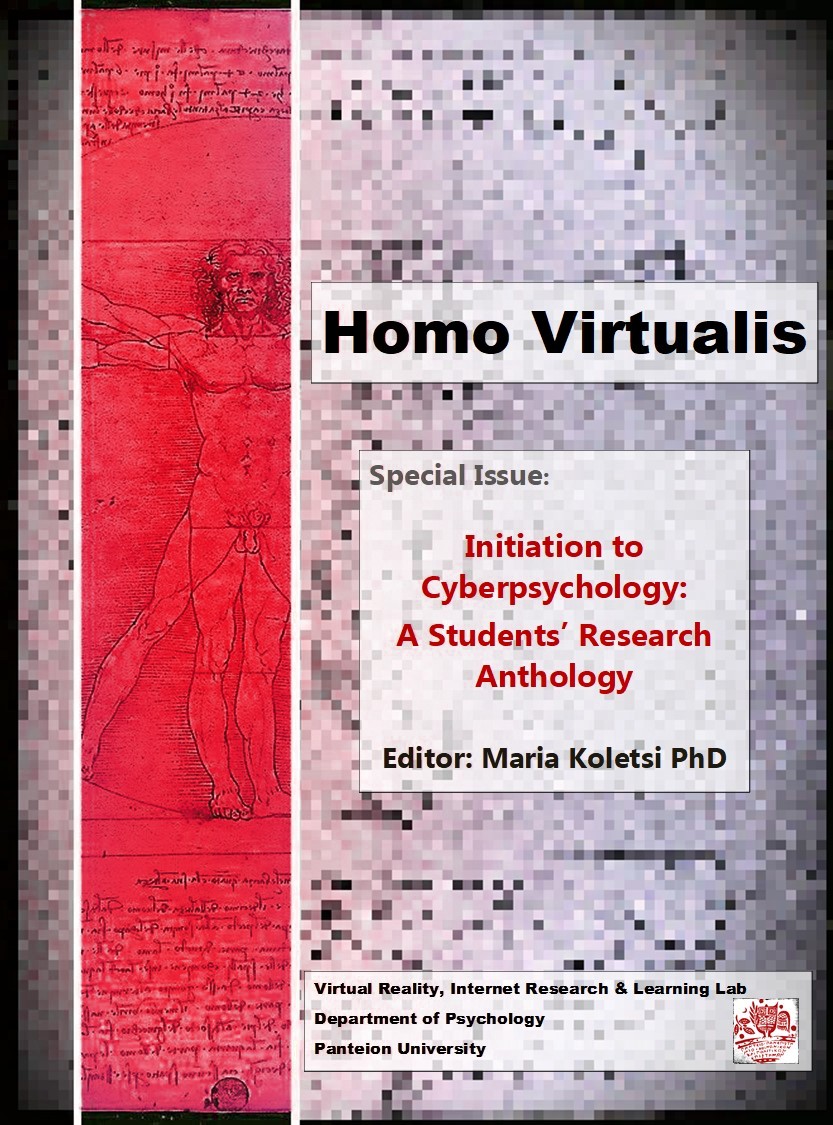Body perception in virtual worlds: The case of Second Life
Abstract
Researchers have studied the body at first as a biological subject and then as a social one. At the same time, with the evolution of technology, a new way of viewing the body is proposed, namely the virtualization of the body resulting in the emergence of the “virtual body” (avatars, cyborgs). Thanks to the “virtualized” body, the body that man now has, can be the subject of prediction, control and therefore experimentation with infinite possibilities - as everyone wishes, in virtual environments and worlds. The current study examines body-perception in the context of Second Life (SL); a virtual social world. Data is presented from the first content analysis of YouTube comments by SL users. Data are also presented from the second content analysis of ten (10) interviews of people having experienced worlds similar to Second Life. The results show that Second Life users seem more willing to experiment with the avatar and consider Second Life an environment that inspires creativity and facilitates the expression of desires regarding to the appearance of the avatar. Participants introduced to the virtual world of Second Life for the first time, claimed that SL and its avatars are attractive, with many features and in some cases very "close to reality". However, they stressed the inability of the virtual body to take on a completely “real” state and function. Finally, some limitations are mentioned as well as ideas for future research.
Article Details
- Come citare
-
Gkatsonidou, N., Kortikis, C. ., Vasileiadou, I. ., Zamaria, A. ., & Lioupras, E. . (2022). Body perception in virtual worlds: The case of Second Life. Homo Virtualis, 5(1), 111–135. https://doi.org/10.12681/homvir.30319
- Sezione
- Student Research

TQuesto lavoro è fornito con la licenza Creative Commons Attribuzione 4.0 Internazionale.
Authors who publish with this journal agree to the following terms:
· Authors retain copyright and grant the journal right of first publication with the work simultaneously licensed under a Creative Commons Attribution License that allows others to share the work with an acknowledgement of the work's authorship and initial publication in this journal.
· Authors are able to enter into separate, additional contractual arrangements for the non-exclusive distribution of the journal's published version of the work (e.g. post it to an institutional repository or publish it in a book), with an acknowledgement of its initial publication in this journal.
· Authors are permitted and encouraged to post their work online (preferably in institutional repositories or on their website) prior to and during the submission process, as it can lead to productive exchanges, as well as earlier and greater citation of published work.



